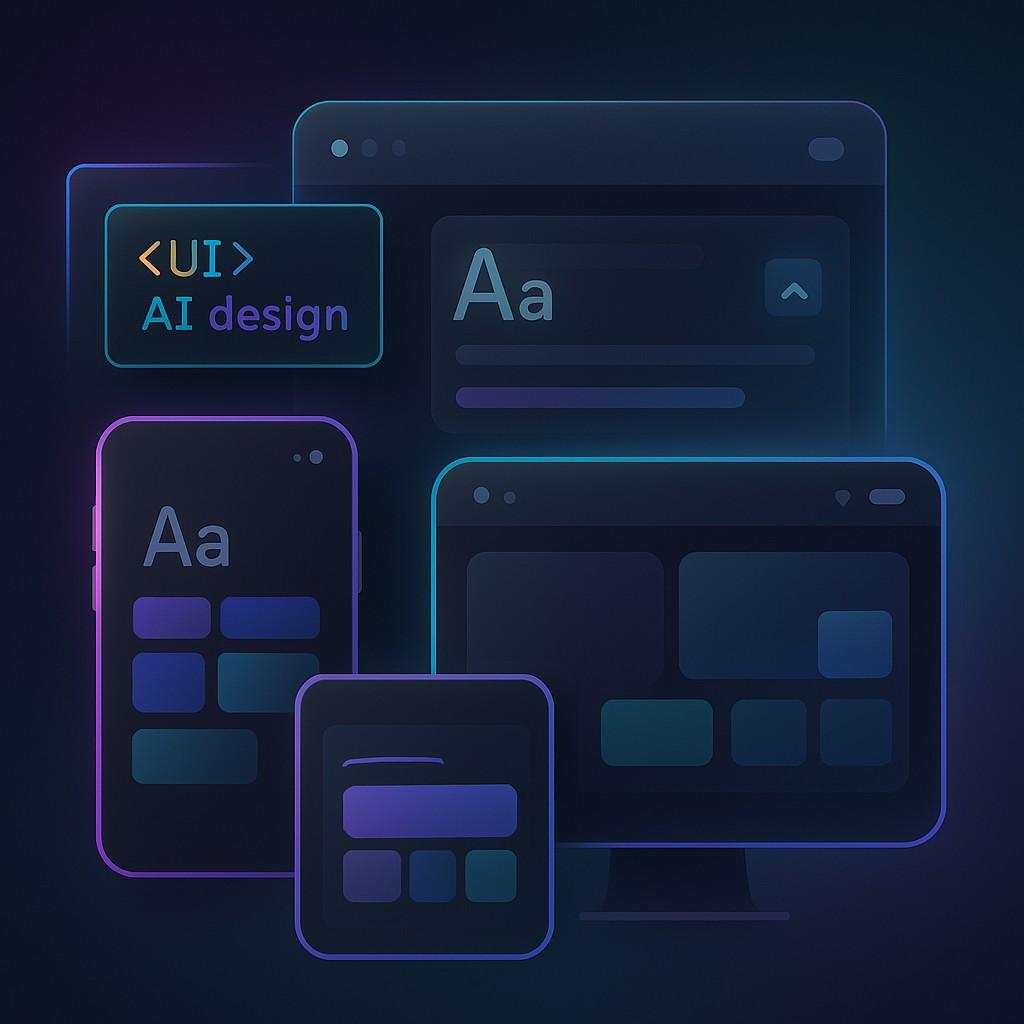The Future of Web Design: Trends You Can’t Ignore in 2025

The field of web design is advancing rapidly. Entering 2025 requires businesses and designers to adjust to fresh trends in order to maintain their competitive edge. Modern websites must prioritize user experience and accessibility alongside performance and innovation beyond their visual appeal. Modern web design has become highly dynamic thanks to new technologies like AI-driven design features along with immersive experiences and hyper-personalisation elements.
So, what are the biggest web design trends you can’t afford to ignore in 2025? Let’s explore them.
1. AI-Driven and Automated Web Design
What’s Changing? Artificial Intelligence (AI) is revolutionising web design. The integration of AI technologies such as Adobe Sensei and Figma AI with chatbot interfaces enhances website intelligence and operational efficiency.
Why It Matters:
AI can generate entire website layouts based on user input.
Automated chatbots improve customer interaction.
AI-driven analytics can enhance personalisation.
How to Adapt:
Use AI-powered tools to speed up design processes.
Implement AI-driven chatbots to guide users.
Leverage AI analytics to customise user experiences dynamically.
2. Dark Mode & Low-Light UX
What’s Changing? Dark mode usage has evolved beyond trend status to become the standard option across numerous websites and applications. Dark mode interfaces help decrease eye strain and improve visibility under low-light conditions.
Why It Matters:
Users now expect websites to have a dark mode option.
OLED screens save battery with darker themes.
Dark themes offer a sleek, modern aesthetic.
How to Adapt:
Offer a dark mode toggle for user preference.
Ensure text contrast and readability in both light and dark themes.
Use deep, rich colours to make elements stand out.
3. Motion UI & Micro-Interactions
What’s Changing? Websites are becoming more interactive and dynamic with subtle animations and micro-interactions. These elements guide users and improve engagement without overwhelming them.
Why It Matters:
Motion graphics grab attention and enhance storytelling.
Micro-interactions make user interactions more intuitive.
Smooth transitions improve user experience.
How to Adapt:
Use hover effects, animated buttons, and loading animations.
Add motion effects to menus and scrolling interactions.
Ensure animations are fast and smooth to avoid slowing down the site.
4. 3D & Immersive Experiences
What’s Changing? The development of WebGL and interactive 3D elements enables websites to transition into more interactive and immersive designs. AR and VR technologies continue to expand their presence.
Why It Matters:
3D elements enhance engagement and realism.
AR/VR experiences create memorable interactions.
This trend is especially relevant for e-commerce, real estate, and education websites.
How to Adapt:
Implement 3D product previews for online shopping.
Use AR filters to allow customers to visualise products.
Ensure 3D elements are lightweight and optimised for performance.
5. Voice-Activated Interfaces
What’s Changing? As voice assistants like Siri, Alexa, and Google Assistant continue to evolve, more websites are integrating voice search and commands into their functionality.
Why It Matters:
Over 50% of online searches are now voice-based.
Voice interfaces improve accessibility.
Hands-free navigation enhances user convenience.
How to Adapt:
Optimise content for voice search SEO.
Implement voice commands for navigation.
Use natural language processing (NLP) to improve interaction.
6. Minimalism & Ultra-Clean Design
What’s Changing? Minimalist web design is evolving into Ultra-Minimalism, where every unnecessary element is stripped away for a cleaner, faster experience.
Why It Matters:
Enhances focus on important content.
Improves website speed and SEO rankings.
Reduces cognitive overload for users.
How to Adapt:
Use a simple colour palette and bold typography.
Reduce unnecessary buttons and clutter.
Focus on high-quality imagery and whitespace.
7. Hyper-Personalisation & Dynamic Content
What’s Changing? Websites are moving towards hyper-personalised experiences based on user behaviour, location, and preferences.
Why It Matters:
Users expect tailored content.
Personalisation improves engagement and conversions.
AI and machine learning make it easier than ever.
How to Adapt:
Show dynamic content based on user interests.
Personalise recommendations and CTAs.
Use AI to analyse user behaviour and adjust accordingly.
8. Accessibility & Inclusive Design
What’s Changing? Web accessibility is no longer optional—it’s essential. Governments are enforcing stricter accessibility regulations to ensure websites are usable by everyone.
Why It Matters:
Millions of users rely on screen readers and keyboard navigation.
Inclusive design improves usability for all visitors.
Accessibility compliance helps avoid legal issues.
How to Adapt:
Ensure all text has sufficient contrast.
Add alt text to images for screen readers.
Implement keyboard-friendly navigation.
9. Faster Load Speeds & Performance-Driven Design
What’s Changing? Google prioritises fast-loading websites in search rankings. In 2025, speed optimisation is more critical than ever.
Why It Matters:
53% of users abandon sites that take longer than 3 seconds to load.
Faster websites rank higher on Google.
Improved speed leads to better user retention.
How to Adapt:
Use lightweight images and optimised code.
Implement lazy loading to prioritise visible content.
Choose reliable hosting with fast servers.
10. Sustainability & Eco-Friendly Web Design
What’s Changing? More companies are adopting sustainable web design by reducing their websites’ carbon footprint.
Why It Matters:
Data centres contribute to global energy consumption.
Sustainable design improves website efficiency.
Consumers are prioritising eco-conscious brands.
How to Adapt:
Use energy-efficient hosting providers.
Reduce page weight with simpler code and fewer media files.
Optimise caching and use CDNs (Content Delivery Networks).
Final Thoughts: Staying Ahead in 2025
The main focus of web design in 2025 revolves around innovation together with accessibility and personalised user experiences. Businesses need to adopt AI-driven interfaces and hyper-personalised content to maintain their relevance in the market.
Usk Digital provides advanced web design solutions as our area of expertise. Our team stands ready to support both modern redesign projects and custom-built website development.
🚀 Get in touch today for a free consultation!
